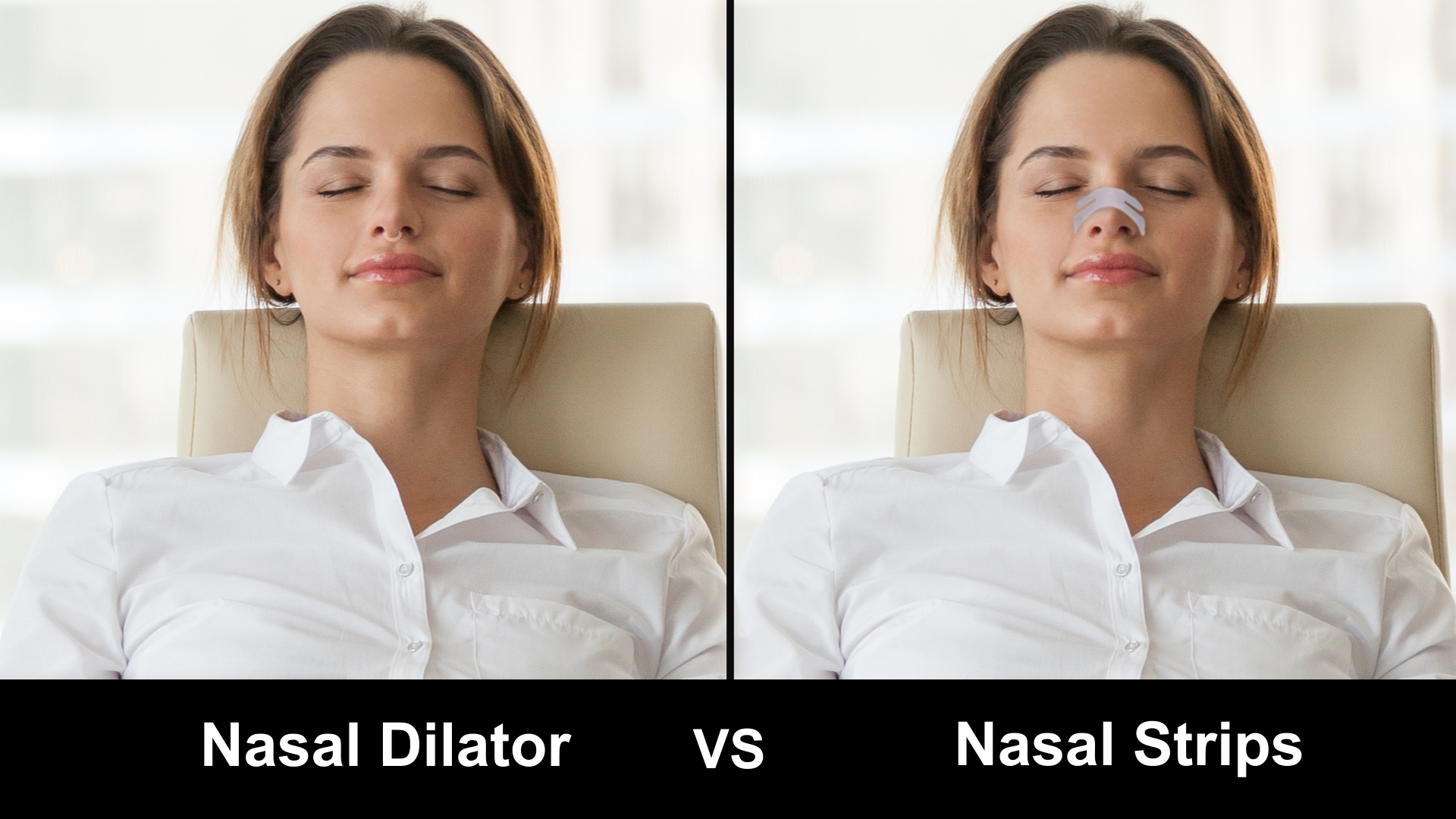
Nasal Dilator vs Nasal Strips
Which one is better? Which is the best choice for your needs? There are several factors we will be reviewing to help you make a well-informed decision.
What is a nasal dilator? What is a nasal strip?
A nasal dilator is a device that expands nasal passages to allow increased airflow. A high quality, well-designed nasal dilator can help improve sleep, reduce snoring and relieve nasal congestion due to colds, allergies, or a deviated septum. The most effective nasal dilators fit inside the nose (or nostrils) and reach up into the narrowest part of the nasal passages, helping to dilate, or push, the nasal canals open for optimum airflow. These are not to be confused with nasal cones, which also fit inside the nose, but don’t reach up into the nose like the AIRMAX® design.
A nasal strip is a flexible adhesive strip that goes over the bridge of the nose and adheres to the skin, using its flex strength/resistance to help spread open the nostrils to improve airflow.
What research has been done comparing the efficacy of these products?
There have been several clinical studies done on the AIRMAX® Nasal Dilator vs. Breathe Right® Nasal Strips. These studies show the overall reduction in air resistance is 3.6 times higher (better) using the AIRMAX® Nasal Dilator.
What about visual appeal?
The AIRMAX® Nasal Dilator goes inside your nose for a discreet look. With the available clear version option in place, many won’t even notice it while being worn. Because nasal strips are worn externally (over the nose) they are very noticeable and thus tend to draw attention.
Is it true they can be painful to remove?
Removing the AIRMAX® is easy. Just pull straight down and it slides out. On the other hand, because nasal strips require strong adhesives to help them stick to your nose, they can be painful to remove, leave sticky residue and even cause skin irritation that can worsen with prolonged use.
Are they comfortable to wear?
Because it’s worn inside the nasal passages, some users experience modest sensitivity to the AIRMAX® device when first used. Newer users are encouraged to use it consistently for two weeks to get accustomed to the fit. The AIRMAX® comes in 2 different sizes for the optimal fit, comfort and performance. When worn according to directions, users report experiencing better breathing and better sleep.
Like nasal dilators, Nasal strips also take some getting used to as you can feel the sticky adhesives pulling on your nose at all times. For those who tolerate wearing nasal strips, they can provide increased airflow and some relief.
So these devices can help me breathe better and get a better night’s sleep, but at what cost?
The AIRMAX® costs about $14.99 and lasts around 90 days, at which time replacement is suggested. Nasal strips cost about $30 for a 90-day supply. This makes the AIRMAX® 50% more cost-effective than nasal strips. Nasal strips can sometimes fail to properly stick and stay in place and therefore must be discarded. This waste further increases the cost of using nasal strips.
In summary
The AIRMAX® nasal dilator performs 3.6 times better than nasal strips. AIRMAX® is much less noticeable or awkward looking than nasal strips. Unlike nasal strips, the AIRMAX® causes no pain during removal. Finally, the AIRMAX® is 50% more cost-effective than nasal strips.
In the end, the best nasal dilator for you is the one that you can tolerate wearing, provides the most relief for your unique breathing-health situation and meets your budget. Regardless of which style you choose, it’s important to know that for those suffering with issues from septum deviations, nasal congestion, sleep apnea, snoring and other nasal conditions that negatively affect breathing, relief is possible with these non-invasive and inexpensive devices.

Is the obstruction the same as the obstruction that causes sleep apnea
Great question, Cathy, and I’m happy to help. Obstructive sleep apnea occurs when the muscles and soft tissues in your throat (tongue and soft palate) relax and block airflow. When nasal airflow is restricted, it can exacerbate sleep apnea. The AIRMAX Nasal Device expands the nasal passages to improve airflow and breathing. You’re welcome to contact us directly if you have further questions or concerns. We’re happy to help. Thanks!
I am new to this but just tried the Mute brand dilator and switched between medium and small. I did sleep better and didn’t snore. However, due to the sharp edges of this brand and the design my nose is scratched on both sides. So, I’m hoping by tomorrow which will be 3.5 days since I’ve used it the pain goes away.
What do you think the changes are that your product could work for me?
Hi,
After having a deviated septum fixed, I have now been diagnosed with ‘Incompetence of nasal valve’. I am currently using nasal strips, and I am wondering if this device would work better in helping me breath at night.
Hi Gary. We appreciate your interest in the AIRMAX and I’m happy to help. I’m sorry to hear of your nasal condition. Yes, I believe the AIRMAX could be very beneficial to you and your situation. Of course everyone’s nasal anatomy is different and everyone has different tolerances to internal nasal devices like these, but understanding how frustrating your condition can be to live with, I certainly think AIRMAX is worth a try. Many users prefer them over nasal strips which can get costly and whose adhesive can irritate the skin on the nose, but it really just comes down to personal preference. Please let me know if you have any further questions or concerns. Thanks, Gary!